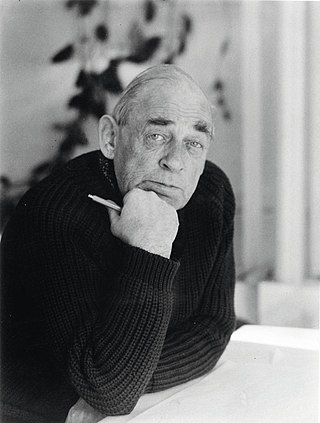
Hugo Alvar Henrik Aalto was a Finnish architect and designer. His work includes architecture, furniture, textiles and glassware, as well as sculptures and paintings. He never regarded himself as an artist, seeing painting and sculpture as "branches of the tree whose trunk is architecture." Aalto's early career ran in parallel with the rapid economic growth and industrialization of Finland during the first half of the 20th century. Many of his clients were industrialists, among them the Ahlström-Gullichsen family, who became his patrons. The span of his career, from the 1920s to the 1970s, is reflected in the styles of his work, ranging from Nordic Classicism of the early work, to a rational International Style Modernism during the 1930s to a more organic modernist style from the 1940s onwards.
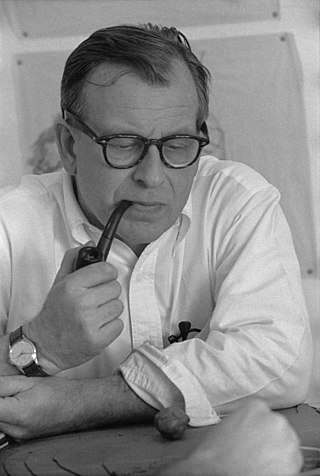
Eero Saarinen was a Finnish-American architect and industrial designer noted for his wide-ranging array of designs for buildings and monuments. Saarinen is best known for designing the General Motors Technical Center in Michigan, Dulles International Airport outside Washington, D.C., the TWA Flight Center in New York City, and the Gateway Arch in St. Louis, Missouri. He was the son of Finnish architect Eliel Saarinen.
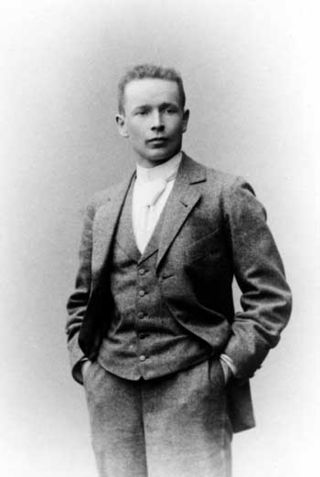
Gottlieb Eliel Saarinen was a Finnish-American architect known for his work with art nouveau buildings in the early years of the 20th century. He was also the father of famed architect Eero Saarinen.

Kaj Gabriel Franck was one of the leading figures of Finnish design and an influential figure in design and applied arts between 1940 and 1980.

Florence Marguerite Knoll Bassett was an American architect, interior designer, furniture designer, and entrepreneur who has been credited with revolutionizing office design and bringing modernist design to office interiors. Knoll and her husband, Hans Knoll, built Knoll Associates into a leader in the fields of furniture and interior design. She worked to professionalize the field of interior design, fighting against gendered stereotypes of the decorator. She is known for her open office designs, populated with modernist furniture and organized rationally for the needs of office workers. Her modernist aesthetic was known for clean lines and clear geometries that were humanized with textures, organic shapes, and colour.

Artek is a Finnish furniture company. It was founded in December 1935 by architect Alvar Aalto and his wife Aino Aalto, visual arts promoter Maire Gullichsen and art historian Nils-Gustav Hahl. The founders chose a non-Finnish name: the neologism Artek was meant to manifest the desire to combine art and technology. This echoed a main idea of the International Style movement, especially the Bauhaus, to emphasize the technical expertise in production and quality of materials, instead of historical-based, eclectic or frivolous ornamentation.

Yrjö Ilmari Tapiovaara was a Finnish designer noted for his furnishings and textiles.

The Tulip chair was designed by Eero Saarinen in 1955 and 1956 for the Knoll company of New York City. The designs were initially entitled the 'Pedestal Group' before Saarinen and Knoll settled on the more organic sounding 'Tulip Chair' to mirror its inspiration from nature. It was designed primarily as a chair to match the complementary dining table. The chair has the smooth lines of modernism and was experimental with materials for its time. The chair is considered a classic of industrial design.

The bubble chair was designed by Finnish furniture designer Eero Aarnio in 1968. It is based on his Ball Chair. The main difference is that the Bubble Chair is attached to the ceiling with a chain, while being made of transparent material which lets the light inside from all directions. The acrylic is heated and blown into a round shape like a soap bubble, within a solid steel frame. It is considered an industrial design classic and to have advanced the usage of plastics in furniture design. The chair is considered modernist or Space Age in design and is often used to symbolize the 1960s period.

The Ball Chair was designed by Finnish furniture designer Eero Aarnio in 1963. The Ball Chair is also known as the globe chair and is famous for its unconventional shape. It is considered a classic of industrial design. More recent versions have increased the overall size and added features including music speakers and MP3 player integration.
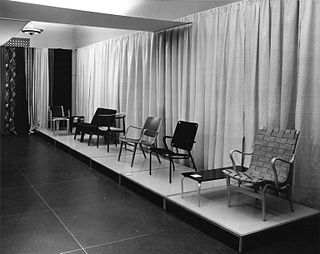
Scandinavian design is a design movement characterized by simplicity, minimalism and functionality that emerged in the early 20th century, and subsequently flourished in the 1950s throughout the five Nordic countries: Denmark, Finland, Norway, Sweden, and Iceland.

Modern furniture refers to furniture produced from the late 19th century through the present that is influenced by modernism. Post-World War II ideals of cutting excess, commodification, and practicality of materials in design heavily influenced the aesthetic of the furniture. It was a tremendous departure from all furniture design that had gone before it. There was an opposition to the decorative arts, which included Art Nouveau, Neoclassical, and Victorian styles. Dark or gilded carved wood and richly patterned fabrics gave way to the glittering simplicity and geometry of polished metal. The forms of furniture evolved from visually heavy to visually light. This shift from decorative to minimalist principles of design can be attributed to the introduction of new technology, changes in philosophy, and the influences of the principles of architecture. As Philip Johnson, the founder of the Department of Architecture and Design at the Museum of Modern Art articulates:
"Today industrial design is functionally motivated and follows the same principles as modern architecture: machine-like simplicity, smoothness of surface, avoidance of ornament ... It is perhaps the most fundamental contrast between the two periods of design that in 1900 the Decorative Arts possessed ..."

The Eames Lounge Chair Wood (LCW) is a low seated easy chair designed by husband and wife team Charles and Ray Eames.
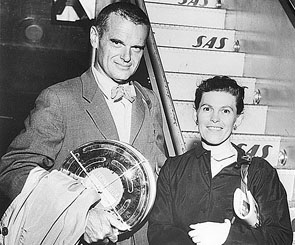
Charles Eames and Ray Eames were an American married couple of industrial designers who made significant historical contributions to the development of modern architecture and furniture through the work of the Eames Office. They also worked in the fields of industrial and graphic design, fine art, and film. Charles was the public face of the Eames Office, but Ray and Charles worked together as creative partners and employed a diverse creative staff. Among their most recognized designs is the Eames Lounge Chair and the Eames Dining Chair.

Antti Aarre Nurmesniemi was a Finnish designer. He is perhaps best known for his coffee pots and his interior design work.
Edra s.p.a. is an Italian manufacturing company specialized in the creation of innovative designer furniture.

The Eames Molded Plastic & Fiberglass Armchair is a fiberglass chair, designed by Charles and Ray Eames, that appeared on the market in 1950. The chair was intentionally designed for the ‘International Competition for Low-Cost Furniture Design.’ This competition, sponsored by the Museum of Modern Art, was motivated by the urgent need in the post-war period for low-cost housing and furnishing designs adaptable to small housing units.

René-Jean Caillette (1919–2005) was a French decorative artist and designer, son of a cabinetmaker. His elegant and modernistic furniture designs were mass-produced after World War II (1939–45). His molded plywood Diamond chair is considered a classic.

Charles W. Stendig is an American businessman and founder of Stendig, Inc. The company was active between 1955 and 1976 and imported a unique selection of modern European furniture to the United States, focusing on contract-grade pieces suitable for commercial use. Stendig was among the pioneers of the movement that would later become known as mid-century modern.




















